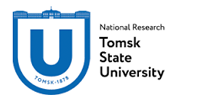Nano and Giga Challenges in Electronics, Photonics and Renewable Energy
Current Trends in Radiophysics
Symposium and Summer School (Tutorial Lectures)
Tomsk, Russia, September 18-22, 2017
nanoandgiga.com/ngc2017 and apr.tsu.ru
Commentary William Petuskey
New Age of Materials Design: Marriage of "in-vivo" and "in-silico"
Many perspectives of the major technological advances in history have frequently referred to a material as the defining term that characterized that era. The “Stone Age” gave way to the “Bronze Age” and then the “Iron Age” in early times, emphasizing the importance of materials discovery, fabrication and application to society. More recently, the launch of the “Silicon Age” in the late 1940’s with the inventions of the diode and transistor was a harbinger of many new materials innovations that have come forward now at increasingly faster pace. The question is how can these advances be led and managed more efficiently and cost effectively without undertaking what are seemingly endless cycles trial-and-error and the associated major costs?
To be sure, the pace of technology now is closely related to the complexity in which materials are combined in clever ways. The cell phone is a beautiful example of how hundreds of different materials can be interfaced with one another and, with software engineering, provide a complexity of function that allows society to invent new ways of communication and exploration on a massive scale. Now we are seeing relevant examples of the same development methodologies being applied to innovations in energy, medicine, transportation, housing and resource management.
In all cases, multiple materials are combined into devices that rely just as much on the properties of their interfaces (or their interfacing) as on the underlying properties of the individual materials themselves. It seems that no new innovation is dependent only on one material by itself, but instead is dependent on combinations of materials. Considering that there are millions of materials that either physically exist or are theoretically conceived, the statistical permutations of interfaces between materials is enormous. This presents both challenge and opportunity.
The coming stage of materials development will necessarily focus on the rational design of the interface and subsequent assemblage into complex devices. This is going to require new and refined research tools to manage, which will undoubtedly rely on computation and simulation. “In-silico” experimentation must work integratively with physical experimentation and prototype testing. In turn, however, the success of this will depend on having access to the basic and baseline information on which meaningful calculations must have as a starting point.
The construction of large databases of fundamental and practical materials information will necessarily need to become an international endeavor of academia, industry and government. However, it needs to be done in ways where the advantages of pooling scientific information and results greatly outweighs the perceived disadvantages of sharing what many might view as proprietary experience. Already there are several international collaborations on systematically computing fundamental physical and thermodynamic properties of real and theoretical substances. The Materials Genome Initiative and other allied initiatives are already proving their worth in calculating the fundamental elastic, electronic, and thermodynamic properties of millions of compounds. This information is made available to all people that have access to web and can serve as a resource for searching for new substances that might serve their need.
The next stage of development though will need to address the issues of interface design, materials compatibility and prediction of the overall properties of the overall properties. Beyond this, the challenge will be in figuring out how to synthesize and fabricate these materials assemblages. These will require new sets of databases that rely on the shared input of all who are involved with materials discovery. There will no doubt be concern that sharing this information is too close to the proprietary needs. The challenge is therefore to overcome these concerns by providing intellectual platforms that have valuable overreaching perspective and will enable rapid advances in individual projects. In a sense, the next frontier of science and technology will to encourage and convince one another of the importance of developing these resources and in all actively participating.














